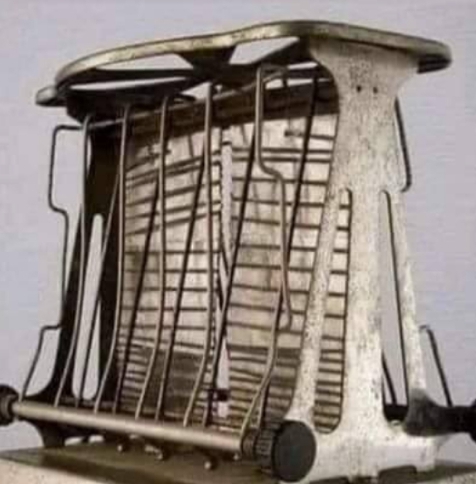Some household items are so common that we hardly give them a second thought, yet they have rich histories that deserve recognition. One such item is aluminum foil—the shiny, flexible sheet that wraps leftovers, covers baking trays, and even helps with household cleaning. But behind this everyday kitchen essential lies a fascinating story that spans wars, innovations, and evolving needs in the home. Ready to explore the origins of aluminum foil? Let’s dive in!
The Origins of Aluminum Foil
Aluminum foil, as we know it today, first appeared in the early 20th century, but its story starts much earlier. The journey begins in the late 19th century when scientists discovered how to extract aluminum from bauxite ore. This was a critical step in making aluminum more accessible and affordable.
A major breakthrough came in 1886, when two inventors, Paul Héroult and Charles Martin Hall, independently developed the Hall-Héroult process for extracting aluminum. This process revolutionized the metal industry, making aluminum widely available and inexpensive to produce. The stage was set for aluminum to become a material of great importance in various industries, including food packaging.
From Metal Sheets to Foil
Before aluminum foil, people used tin foil for similar purposes. Tin foil, made by rolling tin into thin sheets, had many uses, including wrapping food and insulating products. However, tin foil had significant drawbacks: it was fragile, prone to tearing, and lacked the flexibility and durability of aluminum.
In 1910, the American Foil Company began mass-producing aluminum foil, quickly replacing tin foil. Aluminum foil was thinner, stronger, and far more versatile. It was also resistant to corrosion and more pliable, making it perfect for a variety of applications.
By 1926, Alcoa Aluminum Company (short for Aluminum Company of America) had perfected the process of rolling aluminum into foil. This innovation marked the beginning of aluminum foil’s widespread use for food storage, packaging, and preservation, offering a cleaner, more effective alternative to other materials.
World War II: Aluminum Foil’s Major Role
Although aluminum foil was already in use by the 1930s, its popularity skyrocketed during World War II. Aluminum became a crucial resource, not just for civilians, but for the military as well. It was used in the production of planes, tanks, and other wartime equipment. As a result, aluminum foil production was ramped up to meet both military and civilian demands.
During the war, aluminum foil was used in military rations—most famously, the C-rations—to preserve food for soldiers. Its lightweight and airtight properties made it ideal for packaging. After the war, aluminum foil’s reputation as a convenient and reliable packaging material continued to grow.
At home, aluminum foil became a multi-purpose tool. Beyond food storage, it was repurposed for cleaning silverware, lining baking trays, and even acting as a makeshift reflector for photography. By the end of the war, aluminum foil had firmly established itself as an indispensable kitchen item.
Post-War Boom: Aluminum Foil Becomes a Staple
Post-War Boom: Aluminum Foil Becomes a Staple
Following World War II, aluminum foil became even more popular. The post-war economic boom ushered in an era of consumerism, and aluminum foil was marketed as a must-have convenience item. It quickly became synonymous with modernity, efficiency, and innovation in the kitchen.
By the 1950s and 1960s, aluminum foil wasn’t just used for wrapping food—it was also a go-to material for grilling, roasting, and even for craft projects. The introduction of heavy-duty aluminum foil in the 1970s made the material even more versatile and durable, further cementing its place as a kitchen staple.
Aluminum Foil Today: More Than Just a Kitchen Essential
In the modern world, aluminum foil continues to be a kitchen essential, but its uses extend far beyond the culinary realm. It’s used in a variety of industries and applications, such as:
Science and Technology: Aluminum foil is employed in the construction of insulation materials, electronic devices, and even solar panels.
Cleaning and Maintenance: It’s handy for scrubbing pots and pans, removing tarnish from silverware, and cleaning grills and ovens.
Crafts and Hobbies: Artists and hobbyists use aluminum foil for sculptures, models, and other creative projects.
Additionally, aluminum foil’s eco-friendly qualities make it a sustainable choice. It can be recycled, and recycling aluminum uses significantly less energy compared to producing new foil, reducing its environmental footprint.
Fun Facts About Aluminum Foil
The “Foil Ball” Trend: Have you ever made a ball out of aluminum foil? It’s not just fun—it also has a practical purpose! Aluminum foil balls are often used to scrub dishes, buff surfaces, or even polish shoes.
Aluminum Foil and Cooking: Home chefs love aluminum foil for its non-stick properties, perfect for roasting vegetables, baking fish, or covering dishes to lock in moisture.
In Space Exploration: NASA uses aluminum-coated materials for insulation on spacecraft, thanks to its lightweight yet durable properties.
Conclusion: A Timeless Household Hero
From its humble beginnings as tin foil to its essential role in kitchens and beyond, aluminum foil has undoubtedly earned its place as one of the most indispensable items in the household. What began as a military necessity has evolved into a versatile and functional tool used for everything from cooking to cleaning to crafting.
So, the next time you pull out a roll of aluminum foil—whether to wrap leftovers, line a baking pan, or even craft a fun project—remember you’re not just using a simple material. You’re tapping into over a century of innovation, convenience, and history. Aluminum foil truly is a timeless household hero!







